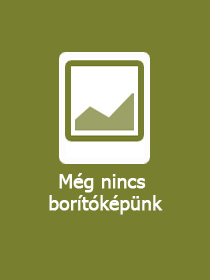
A termék adatai:
| ISBN13: | 9780192858931 |
| ISBN10: | 0192858939 |
| Kötéstípus: | Keménykötés |
| Terjedelem: | 240 oldal |
| Méret: | 234x156 mm |
| Nyelv: | angol |
| 700 |
Témakör:
Capturing Expressivity
Contexts, Methods, and Techniques for Linguistic Research
Kiadó: OUP Oxford
Megjelenés dátuma: 2025. március 31.
Normál ár:
Kiadói listaár:
GBP 84.00
GBP 84.00
Az Ön ára:
39 690 (37 800 Ft + 5% áfa )
Kedvezmény(ek): 10% (kb. 4 410 Ft)
A kedvezmény csak az 'Értesítés a kedvenc témákról' hírlevelünk címzettjeinek rendeléseire érvényes.
Kattintson ide a feliratkozáshoz
Kattintson ide a feliratkozáshoz
Beszerezhetőség:
Még nem jelent meg, de rendelhető. A megjelenéstől számított néhány héten belül megérkezik.
Rövid leírás:
This volume investigates the methods and techniques used for studying expressivity in language, particularly in language documentation settings. The chapters explore a variety of different expressive items from a wide range of languages, focusing on the question of how to 'capture' expressivity in language and culture.
Hosszú leírás:
This volume investigates the methods and techniques used to investigate expressivity, a term used to describe linguistic phenomena that serve an expressive function and deliver sensory information about an event, entity, or other culturally-determined category through a set of grammatical resources. The study of expressivity has gradually grown in stature over the last decade in particular; while there are much earlier accounts of expressivity, particularly within descriptive traditions of African, East Asian, and European linguistics, modern linguistic theory has been rather slow to incorporate information regarding these forms and processes into contemporary dialogue. In many earlier grammars, discussion of expressive elements such as ideophones and mimetics was relegated to footnotes at best. This is no longer the case in modern linguistic documentation and description, necessitating new fieldwork methods and analytical tools. The chapters in this book represent a new stage in the history of the study of expressivity: they explore a variety of different expressive items from a wide range of languages, focusing on the question of how to 'capture' expressivity in language and culture.
Tartalomjegyzék:
Introduction
Part I. Contexts
Ideophones: How the world speaks to us
Expressives in Kuanmu singing
Part II. Methods
Eliciting ideophones in the field: The IdEus-Psylex stimuli collection
Diversifying the toolkit for documentary research on ideophones
Detecting and analysing expressives in a language corpus
Empathy and indirect methods for fieldwork with ideophones in Pastaza and Upper Napo Kichwa
Documenting stealth lexicon: Field methods to collect the use of ideophones in Yucatec Maya
Studying Japanese mimetics
Part III. Techniques
Is there an aesthetic component of language?
Learning to learn expressives: Finding cultural salience in linguistic fieldwork
Part I. Contexts
Ideophones: How the world speaks to us
Expressives in Kuanmu singing
Part II. Methods
Eliciting ideophones in the field: The IdEus-Psylex stimuli collection
Diversifying the toolkit for documentary research on ideophones
Detecting and analysing expressives in a language corpus
Empathy and indirect methods for fieldwork with ideophones in Pastaza and Upper Napo Kichwa
Documenting stealth lexicon: Field methods to collect the use of ideophones in Yucatec Maya
Studying Japanese mimetics
Part III. Techniques
Is there an aesthetic component of language?
Learning to learn expressives: Finding cultural salience in linguistic fieldwork

